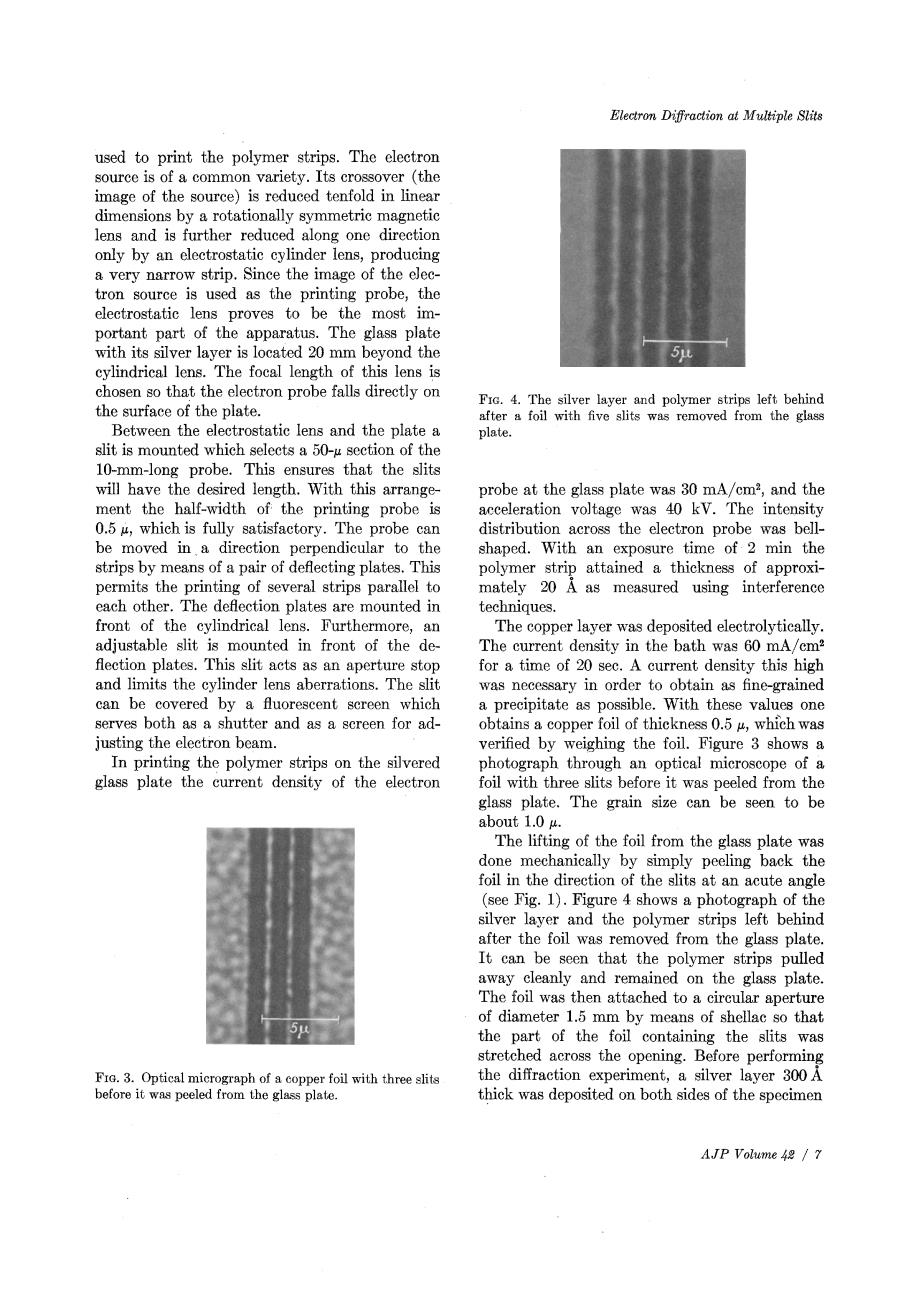正在加载图片...

Electron Diffraction at Multiple Slits used to print the polymer strips.The electron source is of a common variety.Its crossover (the image of the source)is reduced tenfold in linear dimensions by a rotationally symmetric magnetic lens and is further reduced along one direction only by an electrostatic cylinder lens,producing a very narrow strip.Since the image of the elec- tron source is used as the printing probe,the electrostatic lens proves to be the most im- portant part of the apparatus.The glass plate with its silver layer is located 20 mm beyond the 5μ eylindrical lens.The focal length of this lens is chosen so that the electron probe falls directly on FIG.4.The silver layer and polymer strips left behind the surface of the plate. after a foil with five slits was removed from the glass Between the electrostatic lens and the plate a plate. slit is mounted which selects a 50-g section of the 10-mm-long probe.This ensures that the slits will have the desired length.With this arrange- probe at the glass plate was 30 mA/cm2,and the ment the half-width of the printing probe is acceleration voltage was 40 kV.The intensity 0.5 u,which is fully satisfactory.The probe can distribution across the electron probe was bell- be moved in.a direction perpendicular to the shaped.With an exposure time of 2 min the strips by means of a pair of deflecting plates.This polymer strip attained a thickness of approxi- permits the printing of several strips parallel to mately 20 A as measured using interference each other.The deflection plates are mounted in techniques. front of the cylindrical lens.Furthermore,an The copper layer was deposited electrolytically. adjustable slit is mounted in front of the de- The current density in the bath was 60 mA/cm2 flection plates.This slit acts as an aperture stop for a time of 20 sec.A current density this high and limits the cylinder lens aberrations.The slit was necessary in order to obtain as fine-grained can be covered by a fuorescent screen which a precipitate as possible.With these values one serves both as a shutter and as a screen for ad- obtains a copper foil of thickness 0.5 which was justing the electron beam. verified by weighing the foil.Figure 3 shows a In printing the polymer strips on the silvered photograph through an optical microscope of a glass plate the current density of the electron foil with three slits before it was peeled from the glass plate.The grain size can be seen to be about 1.0 u. The lifting of the foil from the glass plate was done mechanically by simply peeling back the foil in the direction of the slits at an acute angle (see Fig.1).Figure 4 shows a photograph of the silver layer and the polymer strips left behind after the foil was removed from the glass plate. It can be seen that the polymer strips pulled away cleanly and remained on the glass plate. The foil was then attached to a circular aperture of diameter 1.5 mm by means of shellac so that the part of the foil containing the slits was stretched across the opening.Before performing FIg.3.Optical micrograph of a copper foil with three slits the diffraction experiment,a silver layer 300 A before it was peeled from the glass plate. thick was deposited on both sides of the specimen AJP Volume 48 /7